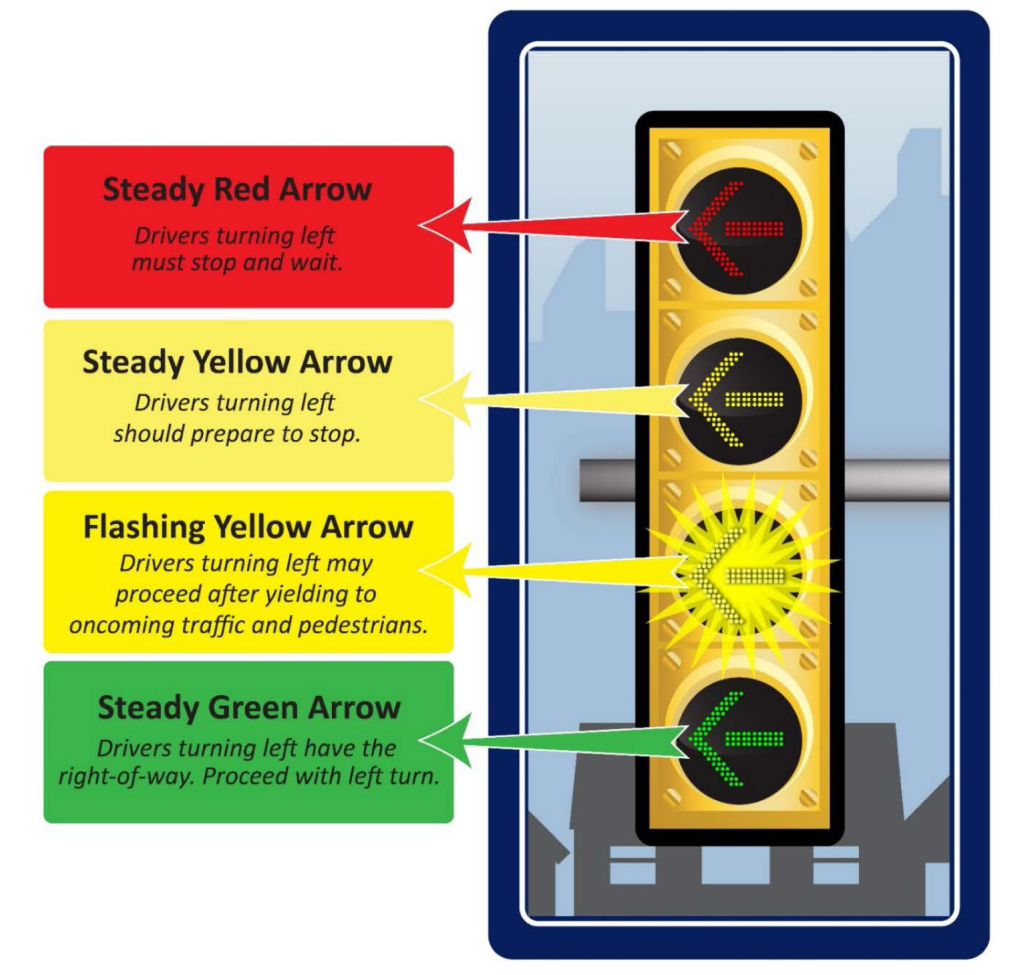Bridge Management Systems: Safer Bridges with a Longer Lifespan at a Reduced Cost
/in Insights-Local Government, Insights-Municipal, Insights-Transportation /by Judy Lincoln5 Reasons You Should Consider a Roadway Pavement Management Program
/in Insights-Local Government, Insights-Municipal, Insights-Transportation, Uncategorized /by Judy LincolnCapital Improvement Planning Helps Londonderry Township Improve Bridge Conditions At Lower Cost
/in Insights-Municipal, Insights-Planning, Insights-Transportation /by Judy Lincoln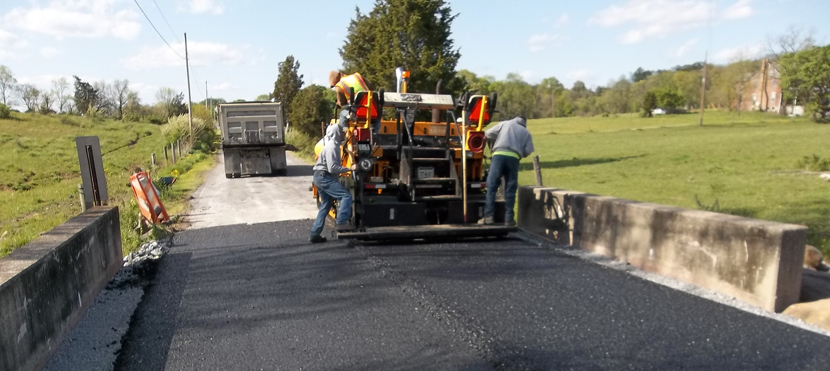
We regularly hear about the condition of infrastructure in the United States, and many times the news is bad. Too often we hear about underground pipes breaking, roads crumbling, and bridges that need to be closed. Fortunately, in Londonderry Township, bridge conditions are actually pretty good.
Londonderry Township is specifically responsible for 13 bridges, all of which cross waterways and are less than 20’ in length. Closing any one of these bridges for safety concerns could cause a significant disruption to emergency access and general traffic flow. To avoid this, Londonderry Township asked HRG to assess all 13 structures and prioritize their maintenance and replacement needs. Our evaluation indicated that all 13 bridges were likely more than 50 years old, and six of them should be replaced within the next 3 – 10 years.
HRG worked with the township to create an approach to address this pressing infrastructure need without overburdening the township’s annual budget. The initial concept was to replace one bridge every other year for the six most critical structures. This would allow us to address the township’s most urgent needs without being forced into an emergency situation. It would also allow us to identify alternative funding for each bridge replacement and carefully plan any necessary road closures to minimize traffic interruption.
Londonderry’s program is a perfect example of infrastructure asset management and capital improvement planning. HRG has written extensively about the benefits of asset management and capital improvement planning. Essentially, a proactive approach to identifying infrastructure needs, prioritizing those needs, and planning for the necessary funding produces better infrastructure at a lower lifetime cost.
Thanks to this forward-looking approach, Londonderry Township is about to replace the last of the original six critical structures: a bridge on Swatara Creek Road. This project is funded through the partial use of a Dauphin County Local Share Gaming Grant.
Three bridges were replaced in 2016: one each on Beagle, Braeburn, and Hollendale Roads. The township bundled these bridges into one project and used extremely favorable funding from the Dauphin County Infrastructure Bank. The first two bridges were replaced in 2012. Only one – on Round Top Road, was planned, but a second bridge on Foxianna Road required replacement after flooding from Tropical Storm Lee undermined the bridge. Fortunately, because of the emergency nature of the bridge replacement, the township was able to use federal disaster relief funding.
With the replacement of the six most critical bridge structures complete, the township will be able to focus on regular maintenance of the remaining seven structures to extend their useful life as long as possible. A proactive approach to maintenance like this means better driving conditions for township drivers over a longer period of time. The bridges will last longer, and the need for replacement will be delayed. This will save the township hundreds of thousands of dollars over time. (See an illustration of how this works with actual budget dollars in our article Better Roads for Less Money with Asset Management.)
The upkeep of bridges can seem like a daunting and expensive task, but it’s actually fairly simple if communities take a proactive approach. Consistent inspections to identify deterioration, regular maintenance to avoid worsening problems, and advanced planning for eventual replacement all combine to simplify bridge upkeep and ensure it remains affordable.
When it does come time for Londonderry Township to replace one of its structures, they will use the same judicial approach to ensure the infrastructure needs of the township are met in an economical manner.
(A version of this article originally appeared in the Londonderry Township newsletter.)
 Andrew Kenworthy, P.E., is the eastern region vice president of HRG. He has more than 25 years of experience in municipal engineering and land development/site design.
Andrew Kenworthy, P.E., is the eastern region vice president of HRG. He has more than 25 years of experience in municipal engineering and land development/site design.
How Dauphin County Has Turned a Small Surplus Into Major Infrastructure Improvements
/in Insights-Financial, Insights-Local Government, Insights-Planning, Insights-Transportation /by Judy LincolnThis article about the Dauphin County Infrastructure Bank is excerpted from the February 2018 issue of Pennsylvania County News magazine. It is provided courtesy of the County Commissioners Association of Pennsylvania (CCAP) and is reprinted here with their permission. This is in no way an endorsement by CCAP of the products or services offered by HRG.
What would you do with an extra $350,000 per year in your county Liquid Fuels budget?
It sounds like a nice problem to have, doesn’t it?
That’s exactly the challenge Dauphin County faced six years ago as its aggressive bridge management program reached a very important milestone: The last load-posted, structurally deficient bridge in the county’s inventory was fully programmed to be replaced.
This video tells the story of the last structurally deficient bridge in Dauphin County. Once the county funded the replacement of this bridge, it had a surplus of Liquid Fuels money in its budget. They decided to use this surplus as seed money for an infrastructure bank that has funded more than a dozen roadway, traffic and bridge improvements throughout the county in just a few years. (Learn more about the county’s last structurally deficient bridge in this profile.)
For almost 30 years, the county had patiently and strategically planned the rehabilitation or replacement of 51 bridges. Close to 1/3 of its county-wide inventory had been structurally deficient at the time they embarked on this effort in 1984.
Now that hard work and determination was about to pay off. The county could drastically reduce its spending on bridge capital improvements by shifting from a replacement phase to a maintenance phase.
The county’s engineer, Herbert, Rowland & Grubic, Inc. (HRG), analyzed what investments would be necessary to proactively maintain the bridges and determined that the county would have an annual surplus of approximately $350,000 in Liquid Fuels funding beyond what was needed for maintenance expenses.
County commissioner Jeff Haste wanted to make sure the money was used wisely: “The county’s bridge management program had delivered tremendous value to our residents, drastically improving the safety and efficiency of our transportation system for drivers. We wanted to use this money to deliver even more value.”

County Commissioners Haste, Pries and Hartwick wanted to maximize the benefit of these surplus dollars for county residents. The infrastructure bank approach has allowed them to fund more than $11 million in improvements with an initial investment of $1 million.
Haste and his fellow commissioners, Mike Pries and George P. Hartwick, III, were thinking big, but regulatory requirements threatened to make the impact of this money small.
“Because of the forced distribution procedure associated with Liquid Fuels funding,” Haste explained, “the county had to come up with a use for this money or disburse it evenly to all 40 of our member municipalities.”
On average, each municipality would’ve received less than $10,000, which is too small a sum to do anything more significant that buy a little extra road salt for the winter.
Yet, even if the county used the entire $350,000 surplus itself, they wouldn’t be able to cover the cost of even one small capital improvement like a single-span bridge replacement (which typically costs between $500,000 to $1 million).
Haste, Pries and Hartwick wanted to have a larger impact, so they asked county staff to collaborate on a solution with the engineer who’d designed the successful bridge management program in the first place.
Together, they came up with an innovative program in which the county would use this annual Liquid Fuels surplus to dramatically reduce the cost of infrastructure improvements for local municipalities.
How the Dauphin County Infrastructure Bank Works
The Dauphin County Infrastructure Bank offers loans to municipalities (or private sector companies) to design and construct local roadway, bridge and traffic improvements – at unbeatably low interest rates. Municipalities can borrow money for as little as 0.5% interest. (Private sector borrowers pay a 1% interest rate.)
As an added bonus, Dauphin County provides loan recipients with optional engineering design support. This is very beneficial to smaller municipalities who have never completed a large capital improvement project before and may not know how to navigate the complicated state and federal requirements these projects must meet. An experienced consultant can save these municipalities from costly and time-consuming mistakes and re-work.
But, if $350,000 wasn’t enough money for the county to complete one major capital improvement project on its own, how can it use that money to fund multiple projects by its municipalities?
The power of partnerships.
Dauphin County multiplies the value of its $350,000 investment by combining it with additional funding from Pennsylvania’s state infrastructure bank.
Essentially, the county uses its Liquid Fuels surplus to make it more affordable for municipalities and private sector organizations to borrow money from the state by paying a portion of their interest. Interest on Pennsylvania Infrastructure Bank loans can vary, but it is currently 2.125% at the time this article is being written.
A municipality could borrow funds directly from the Pennsylvania Infrastructure Bank at an interest rate of just over 2%, or it could borrow from Dauphin County, and the county would pay approximately 75% of the interest expenses.
The following diagram shows exactly how the Dauphin County Infrastructure Bank funds its projects:
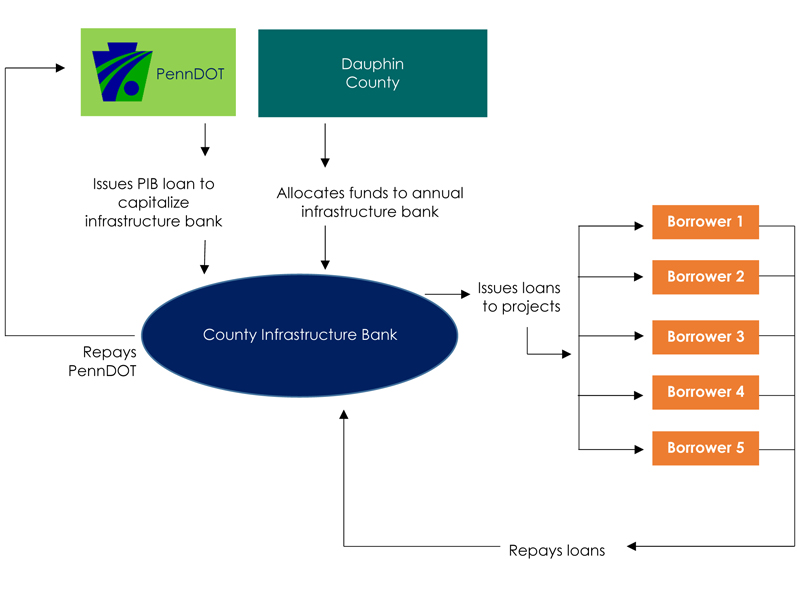
It is a self-renewing process. As municipalities or private sector organizations repay their loan to the county infrastructure bank, the county repays PennDOT. Once the debt is satisfied, the county has the ability to issue new loans to other municipalities or private sector companies.
For some municipalities, the cost savings provided by an infrastructure bank loan can be the difference between being able to move forward with a project at all or having to postpone it a few more years.
In the first three years of the infrastructure bank program, Dauphin County multiplied close to $1 million in Liquid Fuels funding into $11 million worth of improvements to the local transportation system: 7 bridges, one traffic signal, one streetscape, and one intersection improvement.
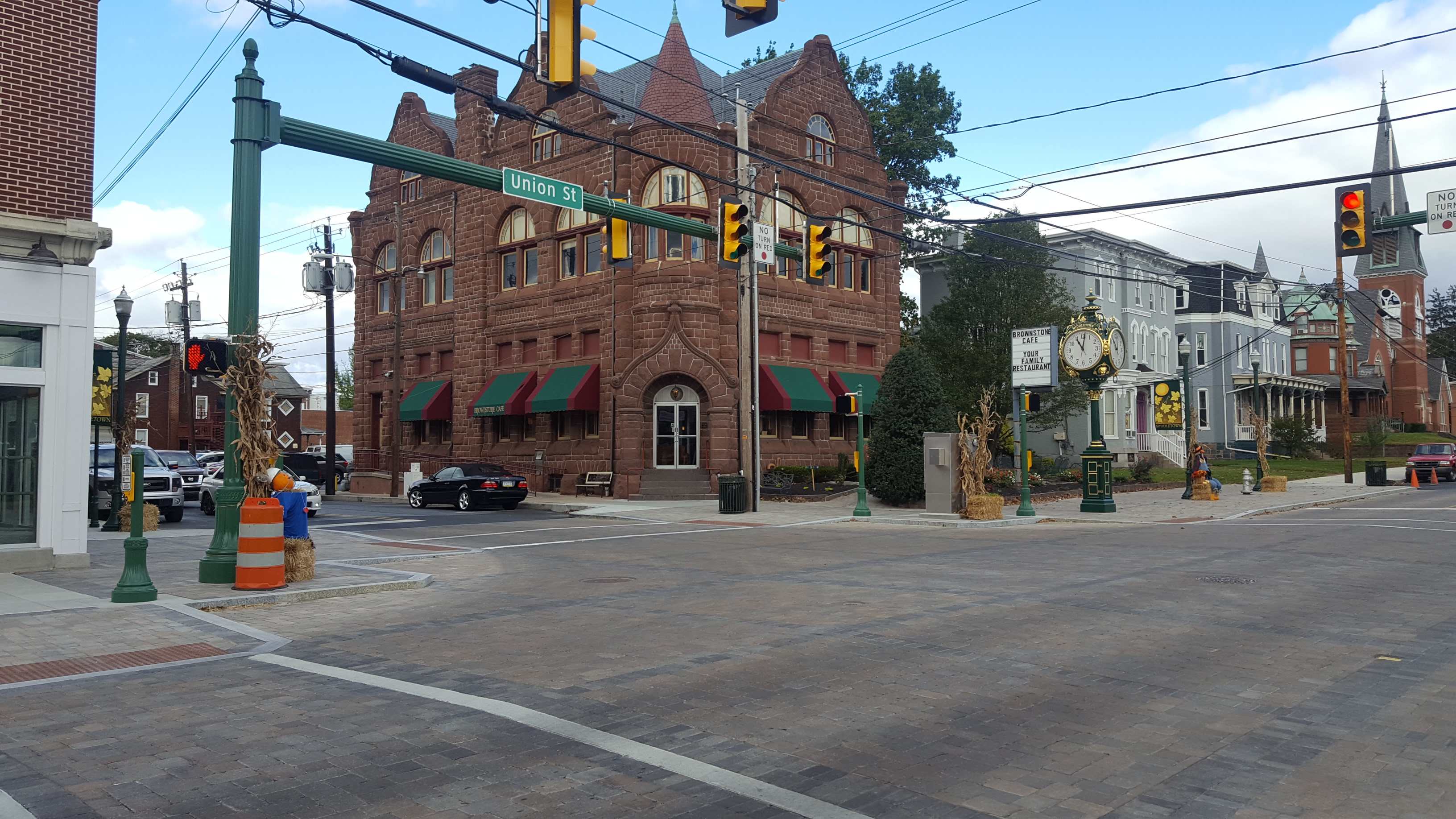
This streetscape project in Middletown Borough is one of the projects that has been funded by the Dauphin County Infrastructure Bank. You can read more about the award-winning project and its potential economic benefit for the community in this article from The Authority.
“This is the kind of dramatic impact we were hoping to have,” says Pries, who oversees Dauphin County’s Community and Economic Development Department.
“The success of our bridge program and the creation of the Dauphin County Infrastructure Bank has allowed us to help residents without the need to raise property taxes. Unlike many other parts of the country, our residents don’t have to worry about crumbling bridges and road networks.”
Read more about the Dauphin County Infrastructure Bank, the benefits of implementing an infrastructure bank in your county, and other counties that are considering a program of their own in the February 2018 issue of Pennsylvania County News.

Brian Emberg, P.E., is senior vice president and chief technical officer of Herbert, Rowland & Grubic, Inc. (HRG). He helped design Dauphin County’s bridge management system and worked with the county to develop the Dauphin County Infrastructure Bank. He has more than 30 years of experience designing roadways and bridges and is particularly skilled in creating unique funding solutions to help local governments accomplish their infrastructure goals with limited revenue. You can contact Brian by phone at (717) 564-1121 or by email at bemberg@hrg-inc.com
Duke Street Illustrates an Infrastructure Funding Solution
/in Insights-Financial, Insights-Local Government, Insights-Municipal, Insights-Transportation /by Judy Lincoln- Dauphin County eliminated all of its load-posted, structurally deficient bridges with an ambitious approach to infrastructure funding.
- Now the county is using the money it’s saved to fund a new infrastructure program benefiting its municipalities and private sector.
- The program has already funded 10 projects worth $11 million with just a $1 million investment from the county.
- Read on to learn more about Dauphin County’s innovative infrastructure funding solution.

We begin this story in its final chapter, celebrating the construction of the Duke Street Bridge in Hummelstown Borough and South Hanover Township.
It’s a story that plays out all over America every day: a local government struggling to address aging, deteriorating infrastructure.
But Dauphin County’s story is different. With HRG’s help, they’ve found a solution to the infrastructure funding problem and are turning the page to a new, brighter future: a future they have the freedom to author themselves.
How did they get here? Asset management and capital improvement planning.
Ambitious Capital Improvement Program Eliminates Structurally Deficient Bridges
In 1984, 1/3 of Dauphin County’s bridges were structurally deficient. It’s the kind of problem many local governments – under tight budget constraints – might find insurmountable. But Dauphin County knew that solving big problems is not done in one swift motion; it’s accomplished piece-by-piece.
Accordingly, HRG designed a long-term asset management and capital improvement planning program for them. It has several components:
- Inspecting and assessing the condition of each county-owned bridge every two years.
- Identifying the appropriate type and timing of maintenance, restoration or replacement measures.
- Creating (and updating) a Bridge Improvement Plan that prioritizes these measures over a 10-year period. (Projects are ranked not just on the bridge’s structural condition but also its importance to the local transportation network [as determined by the amount of traffic it carries, whether it’s located on EMS or school bus routes, etc.])
- Using this data to seek funding.
- Leveraging this funding to complete projects over time, addressing the most urgent needs first and steadily whittling that list of structural deficiencies down to nothing.
By taking a proactive approach like this (vs a reactive approach that addresses bridges only after they’ve failed), Dauphin County extends the life of its bridges, maximizing their usefulness while minimizing their life cycle cost.
They also position themselves well for outside funding. A good capital improvement plan includes plenty of data about how many people rely on a piece of infrastructure and how they would be impacted if it were to fail or be taken out of service. This information is very persuasive to funding agencies, who want to make sure their investment provides the biggest possible benefit to the community.
But agencies also want to be sure the money they invest will produce results: that the project will successfully transition from concept to construction. A well-designed capital improvement plan does just that. It shows you have identified exactly what is required to get a project built (including the timelines for permits and approvals) and that you know the full scope and cost of what you want to accomplish. It also shows you have allocated money in advance to get the job done.
This level of detail reassures funding agencies that the money they invest will be used wisely and the project will be completed successfully. (See our article on Positioning Yourself for Grant Funding for more detail.)
In fact, funding agencies are increasingly requiring data like this in their application process, so a capital improvement plan is quickly transforming from a nice-to-have item into a necessary part of your infrastructure approach. (Our article on successfully applying for Pennsylvania Act 89 transportation funding explains this in more detail.)
Many pages have been written about Dauphin County’s success with this strategy over the years. (It has been featured in Pennsylvania County News and Road and Bridges magazine among others.) In addition, the county has won several awards for projects accomplished using this approach: two Road and Bridge Safety Awards, a National Timber Bridge Award, and a historic preservation award from the PHMC.
But the successful completion of Duke Street in 2017 is not just an ending; it’s the beginning of a whole new story for Dauphin County. With no more load-posted, structurally deficient bridges to address, the county transitioned its focus from replacement to maintenance. This has enabled county officials to create a new program for funding infrastructure, using a portion of the Liquid Fuels funds it used to need for bridge replacements.
Savings Are Used to Encourage Economic Growth With a New Infrastructure Funding Program for Municipalities and the Private Sector
The Dauphin County Infrastructure Bank combines this Liquid Fuels funding with additional money from PennDOT’s Pennsylvania Infrastructure Bank to offer loans to county municipalities, businesses, and non-profits at unbeatably low interest rates (as low as 0.5%) for the construction of roads and bridges under their jurisdiction. Over the past three years, the county has turned a $1 million investment into 10 projects worth $11 million.

Again, Dauphin County has its eye on the long view, using its funds to promote economic development throughout its municipalities.
As their example illustrates, the solution to funding our infrastructure is not a short story; it’s a novel with many chapters and a carefully planned arc. In fact, it’s a story that never ends – with the construction of Duke Street serving as the beginning of a new chapter: the Dauphin County Infrastructure Bank. This program will, in turn, fund many new stories with new characters: municipalities and private developers rewriting the future of their communities one roadway or bridge at a time.
Are you ready to become the author of your community’s future?
UPDATE: Dauphin County celebrated a ribbon-cutting for the completed bridge in the spring of 2017. Learn more about the bridge in the video below
 Brian Emberg, P.E., has more than 30 years of experience and has designed hundreds of infrastructure projects. His understanding of project management and keen sense of business practices has lead him to his current position as Senior Vice President and Chief Technical Officer at HRG. He is responsible for the management and oversight of the firm’s technical service groups, sales and marketing, client management, and the maintenance and execution of quality management plans.
Brian Emberg, P.E., has more than 30 years of experience and has designed hundreds of infrastructure projects. His understanding of project management and keen sense of business practices has lead him to his current position as Senior Vice President and Chief Technical Officer at HRG. He is responsible for the management and oversight of the firm’s technical service groups, sales and marketing, client management, and the maintenance and execution of quality management plans.
What Do Flashing Yellow Signals Mean For Your Municipality?
/in Insights-Local Government, Insights-Municipal, Insights-Transportation /by Judy LincolnA new flashing yellow signal has been installed in the Harrisburg area.
It’s the first in Pennsylvania, but flashing yellow signals have been implemented throughout the country.
Studies show they improve safety and reduce left-turn crashes. They can also keep traffic moving more efficiently.
Read on to learn more about their benefits and how much it would cost to convert a traffic signal to this new technology.

Have you seen the new flashing yellow arrow traffic signals?
PennDOT recently unveiled Pennsylvania’s first one in Lower Allen Township, Cumberland County at the intersection of Route 15 and Rossmoyne Road (shown above).
Over the next several months, PennDOT will monitor this intersection to see if the flashing yellow arrow helps to reduce accidents at this location. If it does, these signals will likely be deployed throughout the state.
How does a flashing yellow arrow work?
Historically, drivers making a left turn have had the right-of-way when the traffic light showed them a green arrow. There is no opposing traffic during a green arrow light, so drivers making a left turn don’t have to worry about other cars entering the intersection as they turn.
When a green circle is displayed, however, drivers can only make a left turn if there is no traffic coming from opposing directions. Drivers must first check for opposing traffic and then turn if the roadway is clear.
Under this new system, the flashing yellow arrow will replace the green circle. When a flashing yellow is displayed, drivers will be able to make a left turn, but they must first yield to any oncoming traffic.
Graphic excerpted from PennDOT’s Flashing Yellow Arrow Fact Sheet
Why is the flashing yellow beneficial?
Drivers intuitively associate yellow with caution, so they are more likely to understand that they can only turn if there is no opposing traffic than they are with a solid green circle (which our brains associate with the direction to Go.)
In fact, a study by the Federal Highway Administration has shown them to reduce left-turn accidents by as much as 20%. This is one of the reasons the Route 15/Rossmoyne Road intersection was selected for the first flashing yellow signal in the state. More than 80% of the accidents at this intersection have involved left-turn movements (37 in the last four years).
In addition to improving safety, flashing yellow arrows can keep traffic moving more efficiently by providing more opportunities for left turns to occur. At intersections that previously went from green arrow to solid yellow, drivers will have an additional phase for left-turning movements. This, in turn, reduces delay and can eliminate complaints municipalities sometimes receive about frequently backed-up intersections.
Will municipalities be required to convert their traffic signals to this new flashing yellow arrow format?
No, there is no requirement for municipalities to implement flashing yellow signals at this time. Right now, PennDOT is testing the technology and seeing if it provides similar benefits in Pennsylvania to what is has provided elsewhere.
How much would it cost to convert municipal traffic signals to this new format?
In order to follow the new flashing yellow format, municipalities would only have to change their signal heads, not the mast arms. The new flashing yellow signal in Lower Allen Township cost $6,000 to install, but costs vary, depending on the existing signal operation and the number of directions that the arrow is being installed.
This number does not include engineering fees, which cover the cost of traffic counts, analysis, and a permit update, and can range between $4,000 – $6,000.
All told, a municipality can expect to pay between $8,000 – $14,000 for both construction and engineering fees associated with the implementation of a flashing yellow traffic signal.
For flashing yellow arrows to reduce accidents, as intended, drivers must understand what they mean. Therefore, PennDOT has undertaken an extensive public education effort. You can view a video that explains how the signals work and read a fact sheet about them on PennDOT’s website.
For any questions you might have about how a flashing yellow arrow might benefit your community or what implementation would entail, contact Darren Myer, HRG’s transportation manager for Western PA, or Eric Stump, our transportation manager for Central PA.
Darren Myer, P.E., PTOE , has more than 16 years of experience in roadway and traffic engineering. He serves as traffic engineer for multiple townships and municipalities within Western Pennsylvania. His areas of expertise include traffic studies, signalization, roadway design, and the review of traffic impact studies and land development plans.
, has more than 16 years of experience in roadway and traffic engineering. He serves as traffic engineer for multiple townships and municipalities within Western Pennsylvania. His areas of expertise include traffic studies, signalization, roadway design, and the review of traffic impact studies and land development plans.
Eric Stump, P.E., PTOE , has 14 years of experience and serves as the Traffic Team Leader for HRG’s Eastern Region. His experience includes preparing traffic impact studies for developments, reviewing traffic impact studies for municipalities, preparing traffic signal permit and construction plans, developing coordination programs for traffic signals in a system, and preparing PennDOT Highway Occupancy Permit applications.
, has 14 years of experience and serves as the Traffic Team Leader for HRG’s Eastern Region. His experience includes preparing traffic impact studies for developments, reviewing traffic impact studies for municipalities, preparing traffic signal permit and construction plans, developing coordination programs for traffic signals in a system, and preparing PennDOT Highway Occupancy Permit applications.
Reduce Speeding with Speed Humps and Other Traffic Control Techniques
/in Insights-Municipal, Insights-Transportation /by Judy LincolnMany municipalities have a speeding problem in their neighborhood and wish to address complaints from their residents about safety concerns that result from excessive speed on quiet streets. While those residents often think a stop sign or reduced speed limit will correct the issue, studies indicate that unnecessary stop signs can actually increase speeds on local roads, and speed limits that are reduced below engineering standards are typically ignored.
In a previous post, we explained that the best way to reduce excessive speeding in a neighborhood is to combine education of the community with increased enforcement by police and the construction of engineering techniques that force drivers to slow down. There are many different traffic calming techniques, ranging from planting trees to constructing geometric roadway improvements. In this article, we describe some common techniques, their cost, and their effectiveness.
Photo by pml2008. Used under a Creative Commons license.

Street Trees
For a much lower cost than many of the other techniques discussed here, street trees have proven speed and accident reduction power. They also increase the aesthetic value of a neighborhood, reduce pollution, and maintain cooler temperatures, making them a very cost-effective improvement to a community.
Street trees are typically placed at 15-30 foot intervals and must be carefully located to ensure they provide clear sight lines and do not block street lights or utilities. When designed properly, street trees can reduce speeds between 3 to 15 miles per hour, according to studies cited by urban designer Dan Burden. They also reduce the number of crashes (between 5-20 percent in one study conducted in Toronto).
Though the exact reason for this speed and accident reduction is not known for certain, several theories exist. Some say the trees act as a visual wall that makes drivers more aware of a possible pedestrian presence. Others point to the calming effect trees have on us psychologically, suggesting that a calmer mood causes drivers to slow down.
Average cost: Since tree species vary by region, this cost can also vary widely. However, the average planting cost is between $250 to $650.
Photo by Robert Drudl. Used under a Creative Commons license.
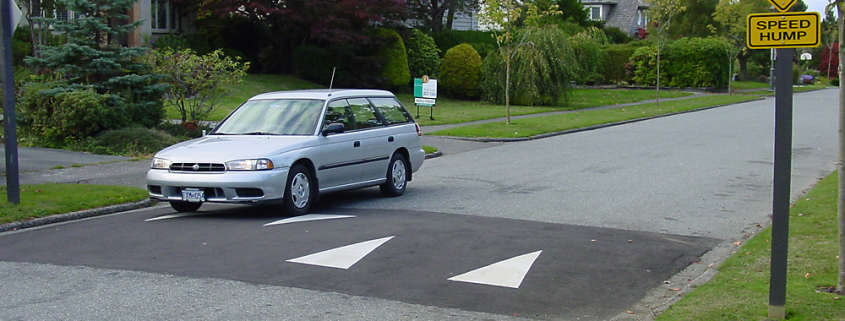
Speed Humps
The most commonly used of the traffic calming measures, speed humps are rounded, raised areas of pavement that are placed every 300-600 feet on local roads. They typically include pavement markings and warning signage on the approaches, so that drivers are aware of their presence.
Speed humps can vary in height between 3 and 4 inches. Studies indicate that, if implemented correctly, these humps will cause drivers to reduce their speed anywhere between 4 to 23 miles per hour.
While well-designed speed humps are effective at reducing speeds on local roads, they should not be used on major collectors, bus routes or primary emergency response routes because they slow down emergency response vehicles (up to 3-5 seconds per hump for fire trucks and up to 10 seconds per hump for ambulances carrying patients).
Average cost: According to published information, the cost of speed humps can range from $1,000 to $6,900, and the average is approximately $2,500.
Photo by Andrew Bossi. Used under a Creative Commons license.
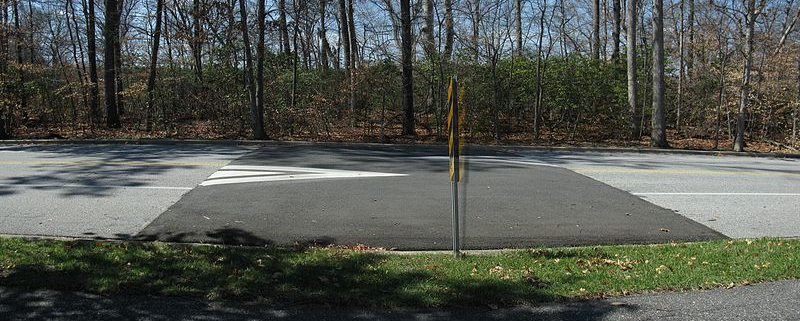
Speed Table (a.k.a. flat-top speed humps)
A speed table is similar to speed humps, but the humps are longer: They are typically designed so that the entire wheelbase of a vehicle can rest on top. Speed tables have a flat section on top and ramps on either side, and textured materials such as brick may be used on the flat section.
They do not produce as jarring a ride as speed humps, so they are preferred by emergency responders; however, drivers typically do not reduce their speed as much as they would with humps, as a result.
When used as raised crosswalks, speed tables increase the likelihood that drivers yield to pedestrians, so they are a good choice for increasing pedestrian safety in a neighborhood.
Average cost: According to published information, the cost of speed tables can range from $1,000 to $6,900, and the average is approximately $2,500.
Roundabout
Many people often think of traffic circles and roundabouts as being interchangeable, but they are not. Traffic circles are often more confusing and simply involve building a raised circular island in an intersection. A modern roundabout will also typically include a raised circular island, but it will include flared approaches. Flared approaches align the vehicle to the right of the center island so that merging of traffic is accomplished more easily, and it eliminates confusion. In addition, splitter islands with yield signs are typically included on each leg approaching the intersection, which helps drivers perceive a change in the roadway is coming and proceed with caution.
Roundabouts can reduce speeds between 15 to 25 miles per hour within the roundabout, and they are very effective at reducing crash frequency in residential neighborhoods (as much as 77 percent in one study) as well as crash severity.
Though new to Pennsylvania, they have been used safely and effectively throughout the U.S. in California, Florida, Maryland, and Washington. Pennsylvania has more than 20 roundabouts throughout the state, and another 40 are currently proposed. (You can watch traffic moving through one we designed at the intersection of North Boundary and Marshall Roads in the video above.) Despite opposition from some residents who aren’t familiar with the traffic pattern, roundabouts have been proven to be safer than traditional intersection designs, and they reduce emissions versus intersections with traffic lights and stop signs. They also eliminate the energy consumption associated with operating traffic signals. As a result, federal and state governments are encouraging engineers to use roundabouts wherever possible.
Due to their high cost, roundabouts are typically only considered when intersection improvements are already necessary, as opposed to being used merely as a device to slow traffic.
Average cost: Costs vary greatly, but typically range between $350,000 to $500,000.
Photo by Robert Drdul. Used here under Creative Commons license.
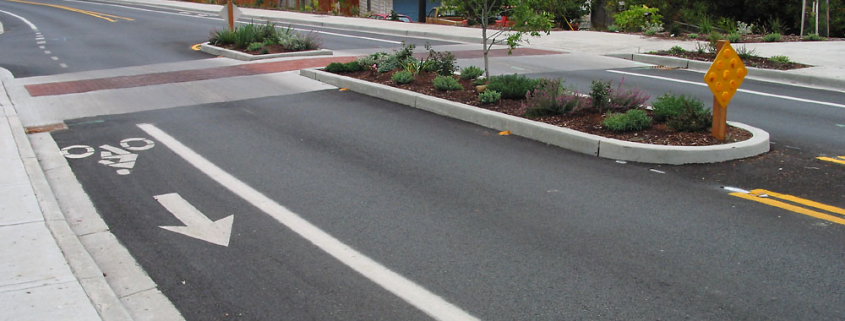
Center Island Narrowing
Sometimes called mid-block medians, these islands are located along the center line of a street, thereby narrowing the lanes of travel and causing drivers to slow down slightly. The islands may help to beautify the area with landscaping and can increase the safety of pedestrians by allowing them to cross one direction of traffic at a time (waiting in the island until the other direction is clear).
Emergency responders typically prefer these islands to other traffic calming devices, but they may reduce parking and driveway access. In addition, bicyclists do not like having to share a narrowed roadway with motorists.
Average cost: Costs range between $5,000 – $15,000.
Bulbouts
Bulbouts are curb extensions that can occur mid-block or at the intersections. They narrow the roadway, forcing drivers to slow down as much as 4 percent in some studies.
While emergency responders typically prefer these to other traffic calming devices like speed tables and speed humps, bicyclists do not like sharing a narrowed roadway with motorists. (However, bulbouts can be designed to include an island that allows bike riders to continue along the original curb line.)
Pedestrians also find bulbouts useful as they can be used to decrease intersection width, providing a shorter and safer crossing for people at the intersections. This, in turn, reduces pedestrian crossing times.
But bulbouts must be carefully designed to ensure adequate drainage, and delineators should be used to make them visible to snow plows.
Average cost: Bulbout costs vary greatly but generally range between $15,000 to $25,000.
Photo by Daniel Mayer. Used under a Creative Commons license.
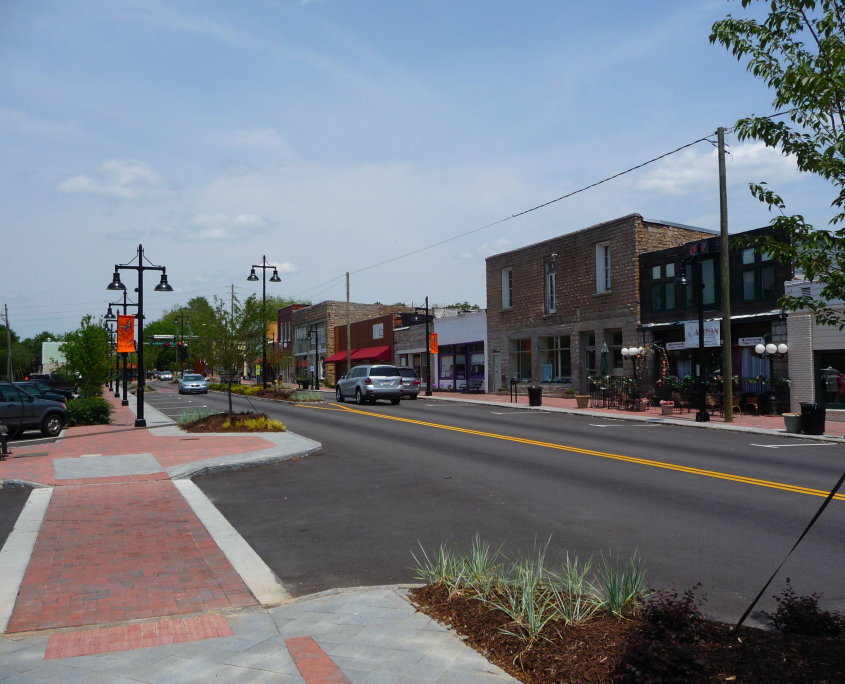
Raised intersections
Raised intersections typically raise the pavement to sidewalk level over the entire intersection using sloped ramps onto a flat, often textured section in the middle, and then ramping back down to roadway height after the intersection.
They are very pedestrian-friendly and reduce intersection speed significantly, but the mid-block speed reduction is less than 10 percent. In addition, they must be carefully designed to ensure proper drainage.
Average cost: Raised intersections range in cost between $25,000 to $70,000.
Most of these traffic calming devices can be used in combination with each other, and, in fact, traffic calming devices should be planned and executed throughout a neighborhood, not on isolated streets. (If the devices are only used on one or two streets, drivers typically switch to alternate routes in order to avoid them, thereby shifting the speeding problem to a new location instead of eliminating it.)
Seeking the assistance of an experienced traffic engineer is crucial to the success of a traffic calming program because many factors must be considered in applying these techniques to ensure they do not cause unintended safety hazards, hamper emergency response, or create drainage problems.
Though the cost to implement these techniques may seem high, funding is available to help municipalities. In another post, we discuss how Act 89 Multi-Modal grants can be used to fund traffic calming projects like these.
For more information about implementing a traffic calming program in your community, contact Brian Emberg, P.E., our Senior Vice President and Director of Transportation Services.
Better Roads for Less Money with Asset Management
/in Insights-Local Government, Insights-Municipal, Insights-Transportation /by Judy Lincoln
Municipal managers are under pressure every day to deliver more services in spite of shrinking budgets. With only so much money available, they must make tough choices about what investments to make in their community. Though they’ve heard the benefits of asset management many times in recent years, they still don’t feel they have the money to invest in such programs – not when that money could be spent on the construction or repair of badly needed roadways, bridges, and pipes.
Many communities see asset management programs as an additional expense, but the truth is: asset management saves you more money than it costs.
See also: Position Yourself for Funding With Asset Management & Capital Improvement Planning
Imagine a tale of two cities: both celebrating the ribbon-cutting on a brand new roadway and each taking a very different approach to caring for it.
City #1 has no asset management or capital improvement planning program. It does not assess the condition of its roadways and plan long-term investments in their upkeep. It makes repairs when the need becomes obvious.
City #1 will make moderate investments in maintenance over the next 20 years, but the condition of the roadway will steadily decline. Ten years after the ribbon-cutting celebration, the roadway condition will be fair at best. Fifteen years after, the residents who heralded its construction will be grumbling about its potholes and cracks. Twenty years after, the condition of the road will be so poor that City #1 will need to completely replace the roadway at a cost of $1.2 million per lane mile.
City #2, on the other hand, has a robust asset management and capital improvement planning program. It routinely inspects the condition of its roadways and takes proactive action to keep those roadways in top form. With investments every five years of approximately $100,000 to resurface the pavement, City #2 maintains its roadway in good condition throughout the next two decades, keeping traffic flowing smoothly, encouraging growth and development, and making residents and local businesses happy. The condition of the roadway never declines to a state where travelers complain.
Over the same 20-year-period, the residents of City #2 will ultimately have paid less money ($400,000) than City #1 ($1.2 million) but will have enjoyed better roadway conditions over the long-term.
Still think you can’t afford to invest in asset management and capital improvement planning? As these two cities show, you can’t afford not to.
For more information about how asset management and capital improvement planning can benefit your community, contact Brian Emberg, P.E., our Senior Vice President and Director of Transportation Services.
Stop Speeding in Your Neighborhood
/in Insights-Local Government, Insights-Municipal, Insights-Transportation /by Jared KrohA version of this article was printed in the September 2017 issue of Pennsylvania Borough News magazine.

A comprehensive traffic calming program that includes community education and involvement, enhanced enforcement, and engineering control is the most effective way to stop speeders and make your neighborhood safe for pedestrians.
Municipal officials frequently get calls from their residents about speeding on local streets. People are worried that they or their children might get hit by a car, or a dangerous vehicle collision could occur. These are valid concerns that need to be addressed. Unfortunately, many residents think stop signs are the way to fix the problem, and they pressure their officials to post them on their street.
But stop signs do not reduce vehicle speeds. They are meant to indicate who has the right-of-way when traffic is coming from different directions, and state DOTs require municipalities to conduct a stop sign warrant analysis to make sure the intersection meets the conditions necessary to require a complete stop. If a municipality installs a stop sign where it is not warranted, it can present liability concerns, and studies indicate that stop signs are not effective for reducing speed anyway.
Drivers respond more to roadway conditions than signage – especially if they feel that signage is in conflict with those conditions. In study after study, drivers who come to a stop-controlled intersection with no other traffic in the area frequently roll through the sign, slowing down for a few seconds rather than coming to a complete stop. Then they often speed up more aggressively after moving through the intersection to make up for lost time.
A study conducted in Michigan by Richard Beaubien and published by the Institute of Transportation Engineers showed that placing stop signs along a roadway increased driver speeds, rather than decreasing them, and studies in Boulder, Colorado, and California have had similar results.
Lowering the speed limit below typical roadway safety standards is also ineffective because most drivers travel at a speed they deem typical for the roadway conditions, rather than constantly checking their speedometer against speed limit signs.
So what can you do to stop speeding on your local roads?
Institute a neighborhood traffic calming program that emphasizes community involvement and combines education and enforcement with engineering techniques such as speed humps.
Educate your residents with a community awareness campaign
Studies and enforcement data history indicate that the majority of speeding on local roads is done by drivers who live in those neighborhoods, so a community education campaign that includes articles in the municipal newsletter or posters at community gathering places (such as schools, libraries, and recreation centers) can be very effective at increasing awareness and reducing speeds. Articles in the local newspaper or community magazine can also be helpful if the problem is significant enough to warrant it, and yard signs reminding people to slow down reinforce the point.
Back it up with enhanced enforcement
When educating the public about a speeding problem in your neighborhood, it’s important to tell them why you want to reduce speeds (including information on any crashes that may have occurred or the compromised safety of pedestrians). It’s also important to connect your education effort with enhanced enforcement by police and let people know that tickets will be issued. Education by itself will not deter speeders for long; the threat of fines is necessary to reduce speeding over the long haul.
Control speed with engineering devices (like speed humps), as needed
While education and enforcement can help reduce excessive speed in most situations, sometimes drivers need an extra nudge or reminder to slow down. A traffic engineer can help you install measures that will encourage or even force drivers to slow down such as speed humps, rumble strips, traffic islands, road narrowing, and pavement markings. (In another article in this series, we describe each of these measures, their cost, and their effectiveness.)
A comprehensive traffic calming program like this that combines education, enforcement, and engineering design can be very successful at eliminating speeding on local roads, but governing requires the consent of the governed. Therefore, the effectiveness of a traffic calming program depends most of all on how invested the community is in making it work. This makes community involvement from the earliest stages very important.
Many communities find it helpful to create a committee of residents to address traffic concerns in the neighborhood. The committee can provide information on speeding and other traffic issues and work with the municipal officials, their retained engineer, and police to devise a strategy to address them. All final decisions are made by municipal officials, but the committee plays a significant role in advising them and helping to determine a solution.
Working as a team, municipal officials, law enforcement, and residents can make roadways safer for the entire community.
For more information on traffic calming programs, read our other articles:
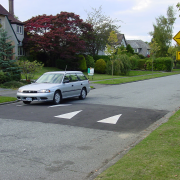 Speed Humps and Other Traffic Control Techniques
Speed Humps and Other Traffic Control Techniques
There are many different traffic calming techniques, ranging from planting trees to constructing geometric roadway improvements. Read a description of the most common techniques, their cost, and their effectiveness.

